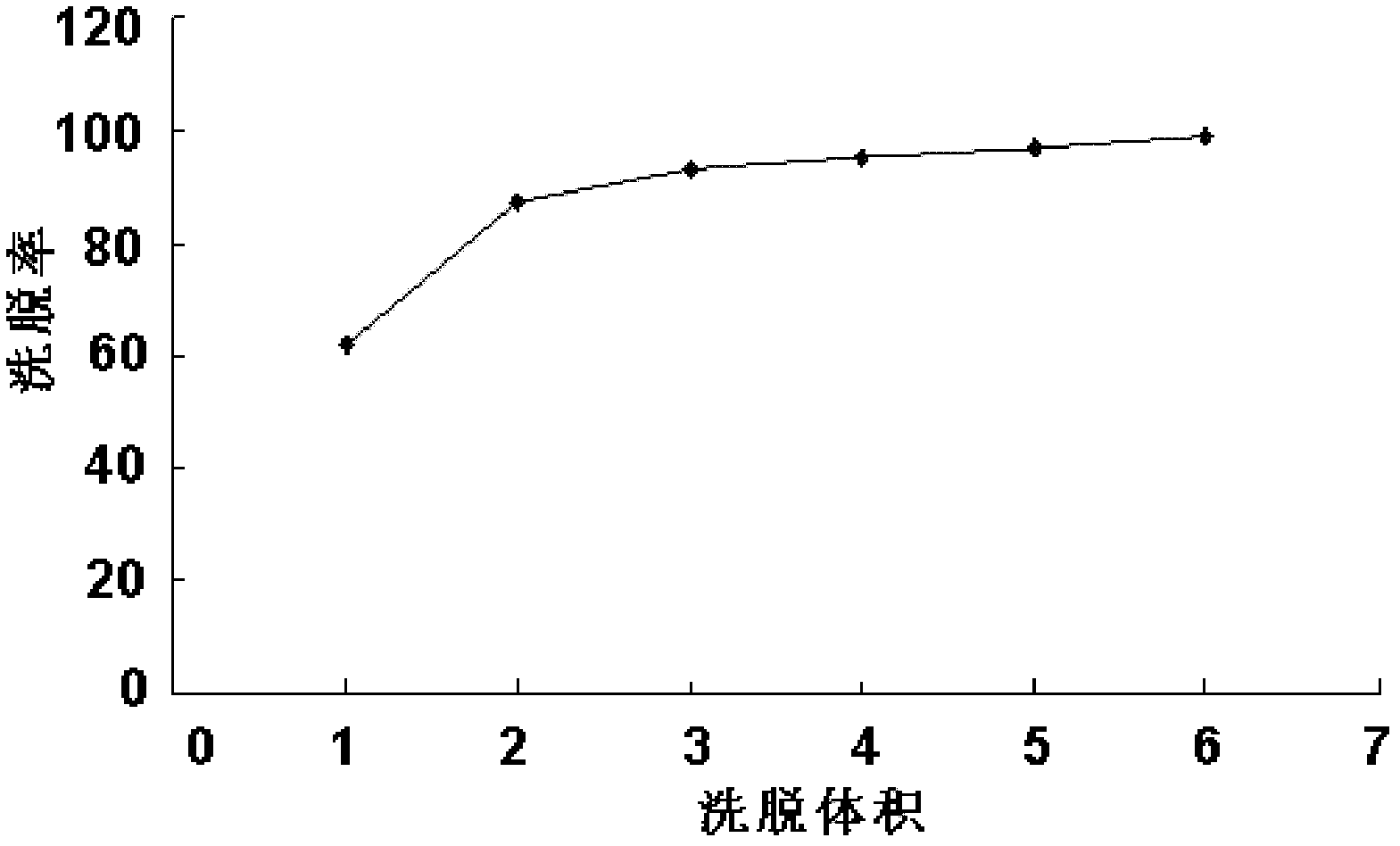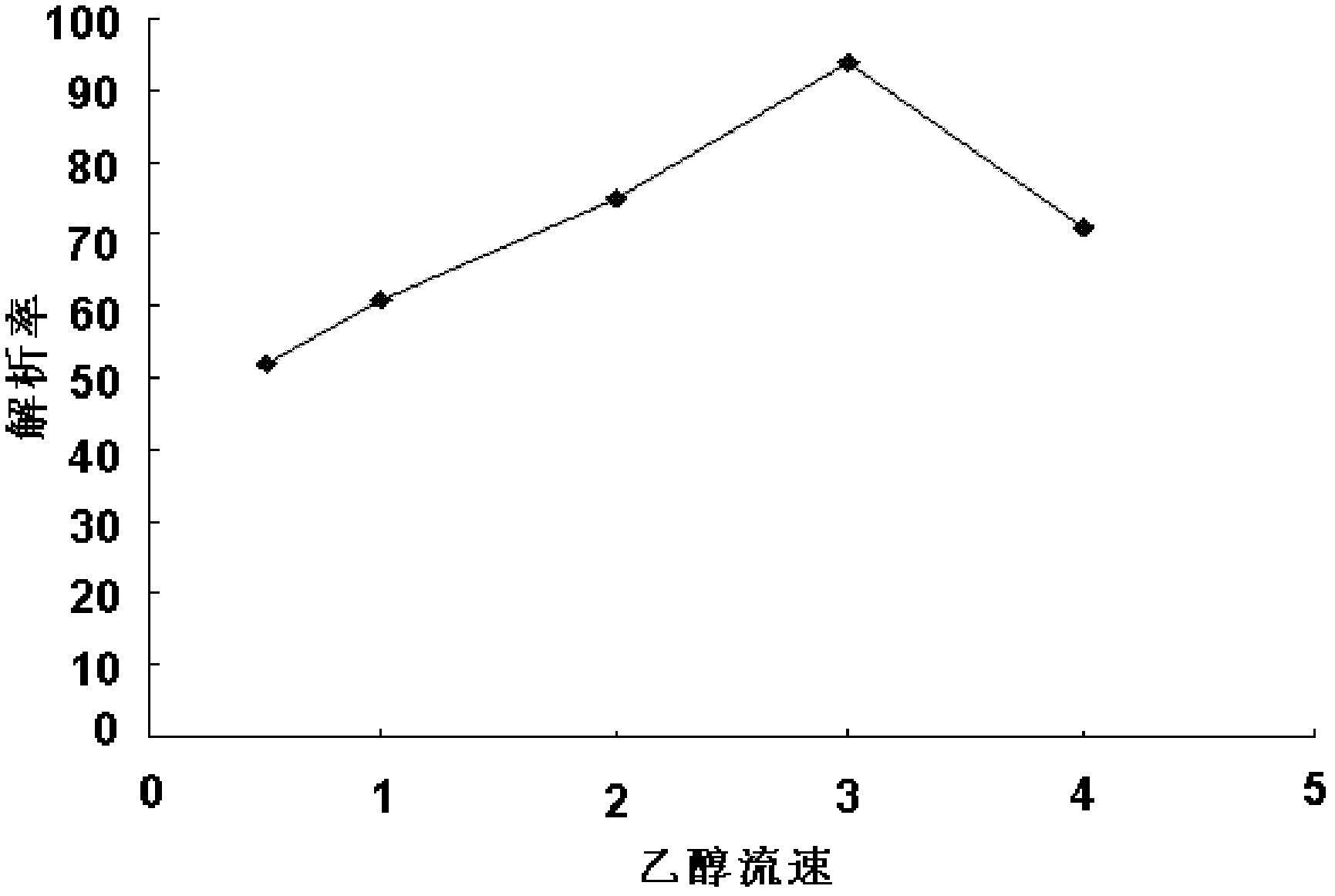Extraction separation method of ginkgolides
A technology of ginkgolide and separation method, which is applied in the directions of medical raw materials, pharmaceutical formulations, organic active ingredients and the like derived from Ginkgo biloba, can solve the problem that there is no process report, no pharmacology, toxicology and clinical test data, and the composition ratio of ginkgolide. question of uncertainty
- Summary
- Abstract
- Description
- Claims
- Application Information
AI Technical Summary
Problems solved by technology
Method used
Image
Examples
Embodiment 1
[0101] Ginkgo biloba coarse powder 50kg, add 65% ethanol and heat and reflux extract 3 times (10, 8, 6 times the amount), each time for 1.5 hours, combine the extracts, filter, concentrate under reduced pressure, add 0.05% methionine and stir to dissolve, use citrate Adjust the pH value of the citric acid solution to 4-5, continue to concentrate, place at low temperature, and filter. First extract with an equal amount of n-hexane, then extract with an equal amount of ethyl acetate, and finally extract with a water-saturated sec-butanol-ethyl acetate mixed solvent, pass through a polyamide (30-60 mesh) resin column, first elute with water, and then use 30% ethanol was used for elution, and then 70% ethanol was used for elution, and the eluents were combined and concentrated under reduced pressure. Add 2 to 3 times the amount of boiling water, stir to dissolve, stand still, let cool, extract with ethyl acetate, concentrate under reduced pressure, add ethanol to heat and stir to ...
Embodiment 2
[0103] Ginkgo biloba coarse powder 200kg, add 6 times the amount of 80% ethanol and heat and reflux extract 3 times, each time for 1.5 hours, combine the extracts, filter, and recover the ethanol from the filtrate under reduced pressure until it has no alcohol smell, add 0.05% methionine and stir to dissolve, use cedar Adjust the pH value of the citric acid solution to 4-5, continue to concentrate, place at low temperature, and filter. First extract with n-hexane, then extract with ethyl acetate, and finally extract with water-saturated sec-butanol-ethyl acetate mixed solvent, pass through a polyamide (30-60 mesh) resin column, first elute with 30% ethanol, and then use 70 % ethanol was used for elution, and the eluents were combined and concentrated under reduced pressure. Add in boiling water, stir to dissolve, let stand to cool, extract with ethyl acetate, concentrate under reduced pressure, add ethanol to heat and stir to dissolve, filter, let cool, precipitate crystals, f...
Embodiment 3
[0105] Ginkgo biloba coarse powder 200kg, add 8 times the amount of 75% ethanol, heat and reflux extraction 3 times, each time for 1.5 hours, combine the extracts, filter, and recover the ethanol from the filtrate under reduced pressure until it has no alcohol smell, add 0.05% methionine and stir to dissolve, use citrate Adjust the pH value of the citric acid solution to 4-5, continue to concentrate, place at low temperature, and filter. First extract with n-hexane, then extract with ethyl acetate, and finally extract with water-saturated sec-butanol-ethyl acetate mixed solvent, pass through a polyamide (30-60 mesh) resin column, first elute with 30% ethanol, and then use 75 % ethanol was used for elution, and the eluents were combined and concentrated under reduced pressure. Add in boiling water, stir to dissolve, let stand to cool, extract with ethyl acetate, concentrate under reduced pressure, add ethanol to heat and stir to dissolve, filter, let cool, precipitate crystals,...
PUM
 Login to View More
Login to View More Abstract
Description
Claims
Application Information
 Login to View More
Login to View More - R&D
- Intellectual Property
- Life Sciences
- Materials
- Tech Scout
- Unparalleled Data Quality
- Higher Quality Content
- 60% Fewer Hallucinations
Browse by: Latest US Patents, China's latest patents, Technical Efficacy Thesaurus, Application Domain, Technology Topic, Popular Technical Reports.
© 2025 PatSnap. All rights reserved.Legal|Privacy policy|Modern Slavery Act Transparency Statement|Sitemap|About US| Contact US: help@patsnap.com



